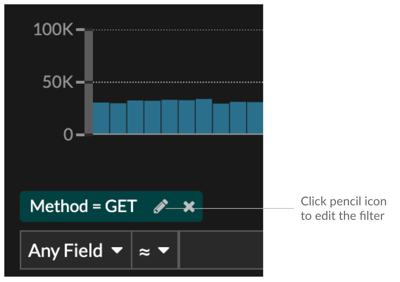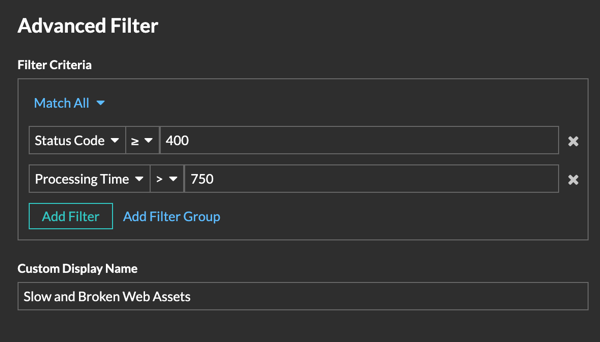Query records with an advanced filter
You can query records that are stored in the recordstore with an advanced filter.
| Note: | To create a record query for a custom metric, you must first define the record relationship by linking the custom metric to a record type. |
Next steps
- To learn how to query for a specific record, see our walkthrough for Discovering missing web resources.
- You can also automate this task through the REST API.
Filter your records with advanced query rules
For advanced queries, you can create and modify complex filters by clicking the Add
Advance Filter button ![]() or by
clicking the pencil icon
or by
clicking the pencil icon ![]() next to any filter that you have added.
next to any filter that you have added.

Here are some important things to know about advanced queries:
- You can specify multiple criteria with OR (Match Any), AND (Match All), and NONE operators
- You can group filters and nest them to four levels within each group
- You can edit a filter group after you create it
- You can create a descriptive name to identify the general purpose of the query
Create a complex filter with AND and OR operators
The following example shows how you can create an advanced query to filter your records with complex criteria. We will create a filter to return results for all HTTP records that include two URIs plus a status code greater than or equal to 400 or a processing time greater than 750 milliseconds.
| Important: | To try this example, you must have HTTP traffic on your network. |

After you click Save, the query automatically runs, and
returns records that match either URI and that have either a status code equal to or
greater than 400 or a processing time that is greater than 750 milliseconds.
Next steps
You can click the Save icon
Thank you for your feedback. Can we contact you to ask follow up questions?